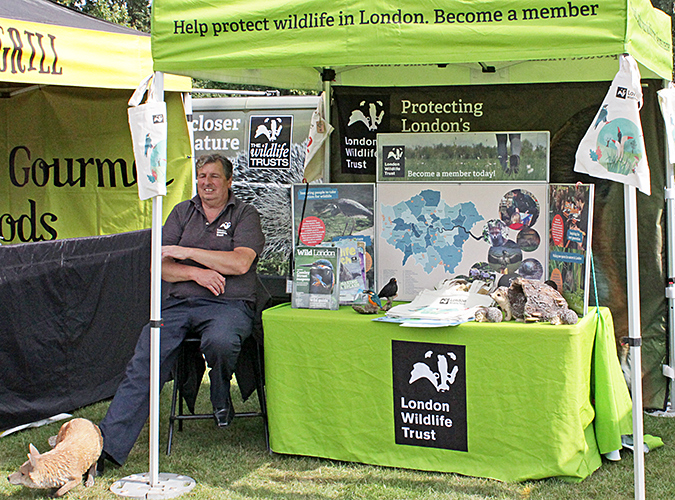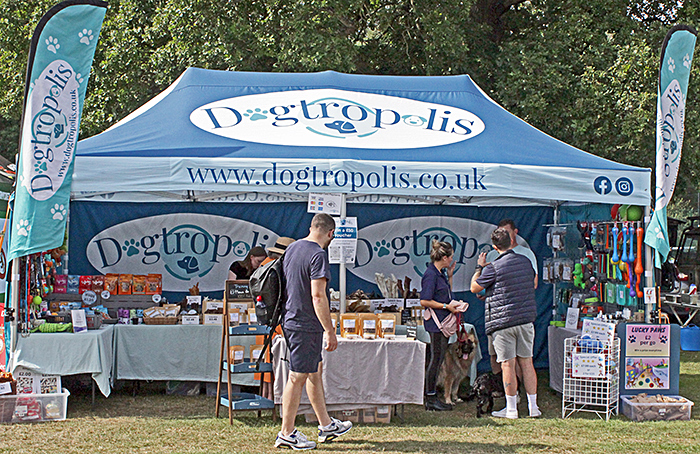Grove Park Carnival
Sunday 3rd September 2023
This was our second visit to the Grove Park Carnival, an annual event in Chinbrook Meadows in south-east London, which includes lots of stalls, a dog show, a funfair and a parade. Lisa and Nigel Ashby, Paul Smith and Alan Wood shared a gazebo with the environmental charity Thames21, next to the Friends of Chinbrook Meadows and ChART gazebo.
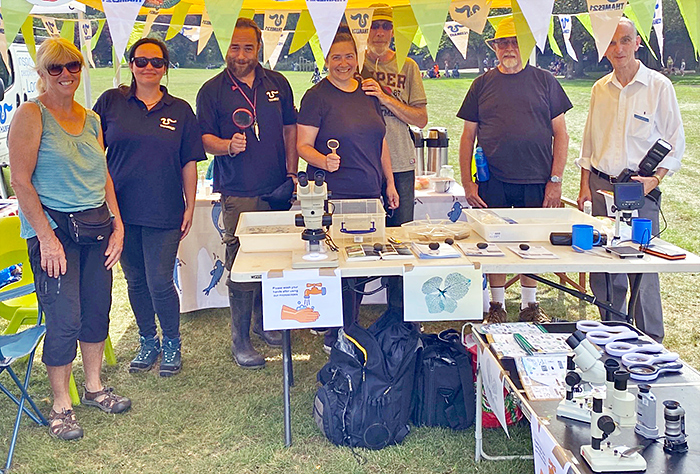 Thames21 gazebo
Thames21 gazebo
(Left to right: Maggie Leharne, Carolina Pinto, Michael O’Neill, Lisa Ashby, Nigel Ashby, Paul Smith, Alan Wood)
We set up several battery-powered microscopes and used them to show invertebrates collected from the River Quaggy. Nigel Ashby collected specimens from the Quaggy using a plankton net for small specimens, and Michael O’Neill used a pond net for larger specimens.
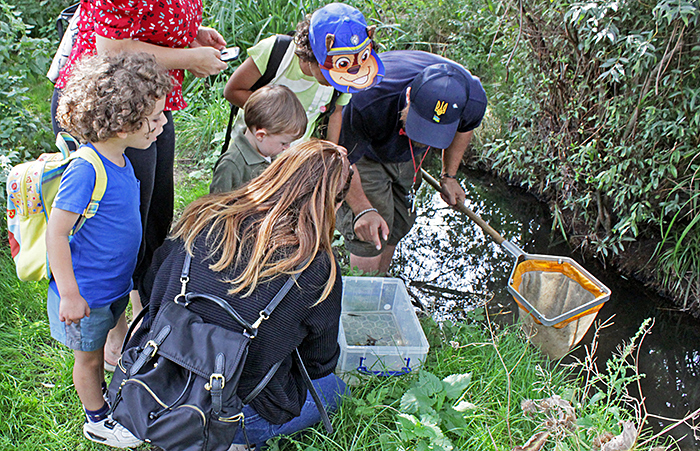 Michael O’Neill collecting from the Quaggy
Michael O’Neill collecting from the Quaggy
The specimens were transferred to plastic trays and segmented containers, and then temporarily into small Petri dishes or cavity slides so that they could be examined under the microscopes. We used pipettes and spoons to transfer the specimens without harming them.
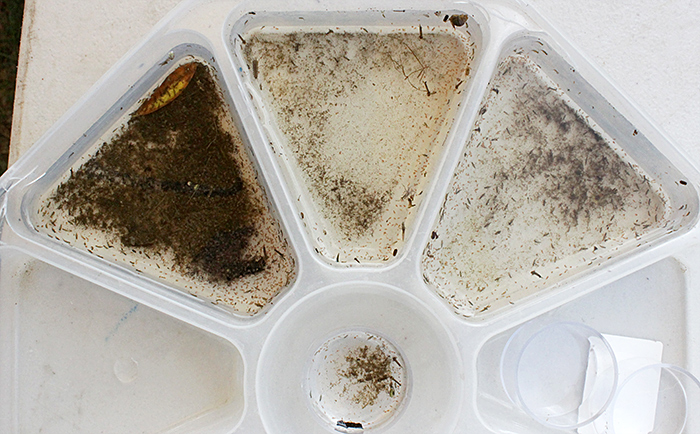 Samples from the River Quaggy
Samples from the River Quaggy
The samples included larvae and pupae of mosquitoes, and an adult emerged from one of the pupae, allowing us to identify the species as Aedes annulipes.
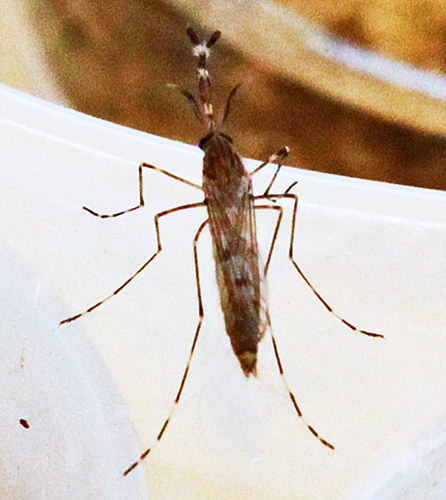 Aedes annulipes mosquito (newly emerged)
Aedes annulipes mosquito (newly emerged)
Other specimens included Daphnia (water fleas), Gammarus (freshwater shrimps), Asellus aquaticus (freshwater hoglouse or pond slater), bloodworms (larvae of non-biting midges, Chironomidae), mayfly nymphs (Ephemeroptera), a large larva of Acilius sulcatus (lesser diving beetle), a caseless caddis larva, an immature Notonectid water boatman, a spired snail, a water mite, leeches, and 3 three-spined sticklebacks (Gasterosteus aculaeatus).
All of the specimens were returned to the river.
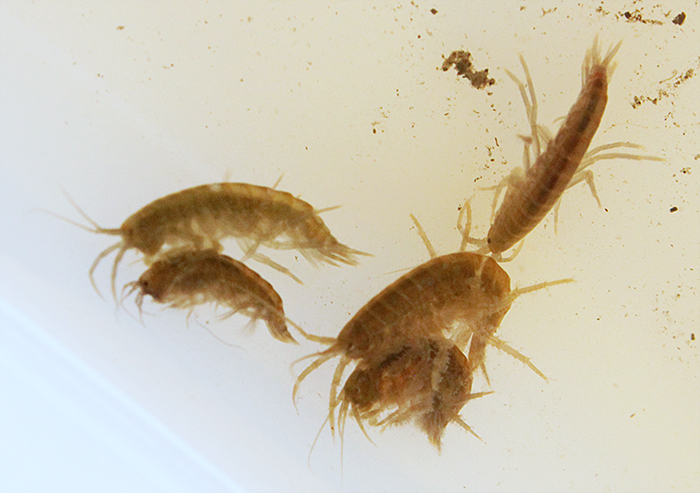 Freshwater shrimps (Gammarus)
Freshwater shrimps (Gammarus)
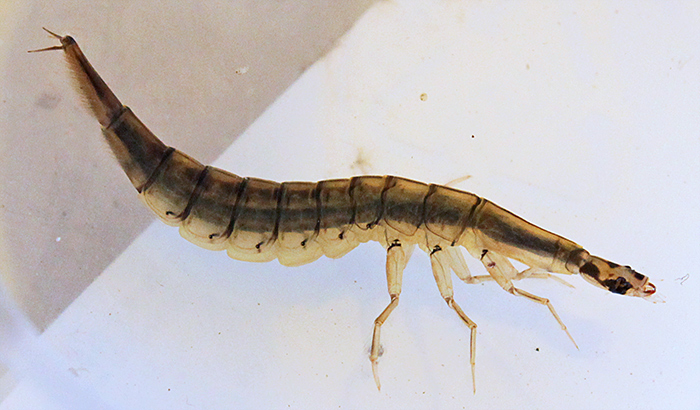 Lesser diving beetle larva (Acilius sulcatus)
Lesser diving beetle larva (Acilius sulcatus)
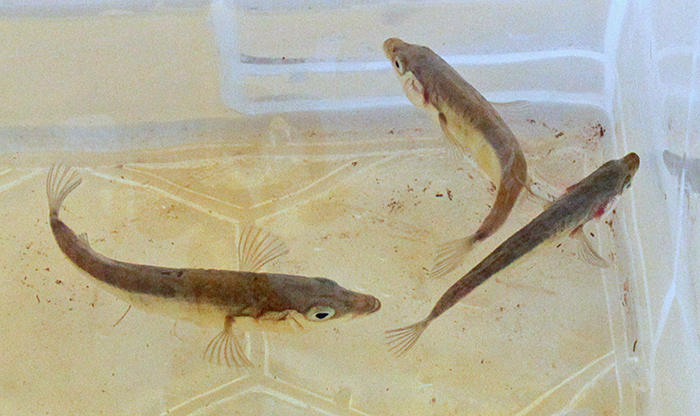 Three-spined sticklebacks (Gasterosteus aculaeatus)
Three-spined sticklebacks (Gasterosteus aculaeatus)
For small children, we had a low table with 4 small microscopes including a stereomicroscope (the STX Stereo Microscope sold on Amazon by GT Vision) and a Natural History Museum Pocket Microscope.
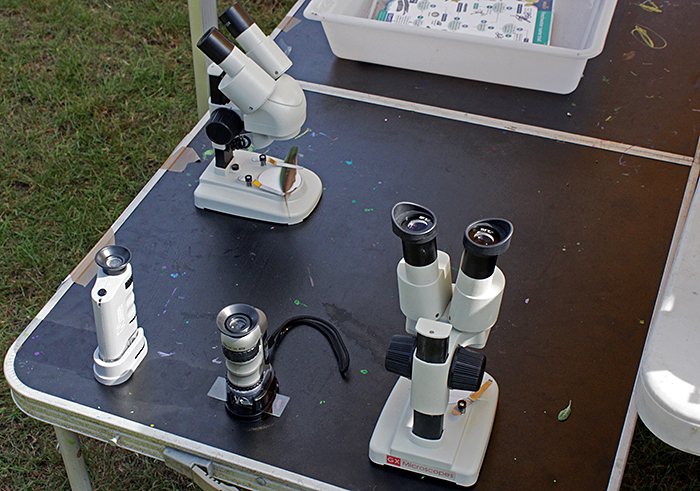 Small microscopes
Small microscopes
For a better view, Alan brought his Olympus SZ4045 stereomicroscope with an LED ring-light connected to a power bank
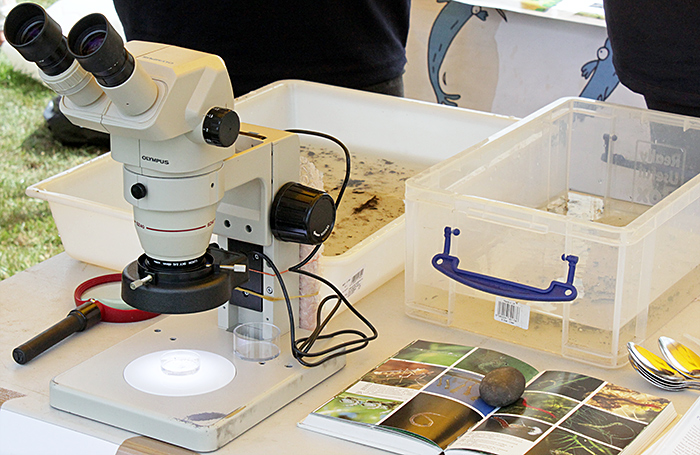 Olympus SZ4045 stereomicroscope
Olympus SZ4045 stereomicroscope
To help identify the specimens, Carolina brought some encapsulated copies of the WildID Freshwater name trail. Alan and Lisa brought copies of Collins Field Guide to Freshwater Life by R. Fitter & R. Manuel (the 1986 edition, very popular with Quekett members). We also had lots of copies of the Club’s free leaflets on using microscopes and observing pond life (available as free PDFs from our Downloads page).
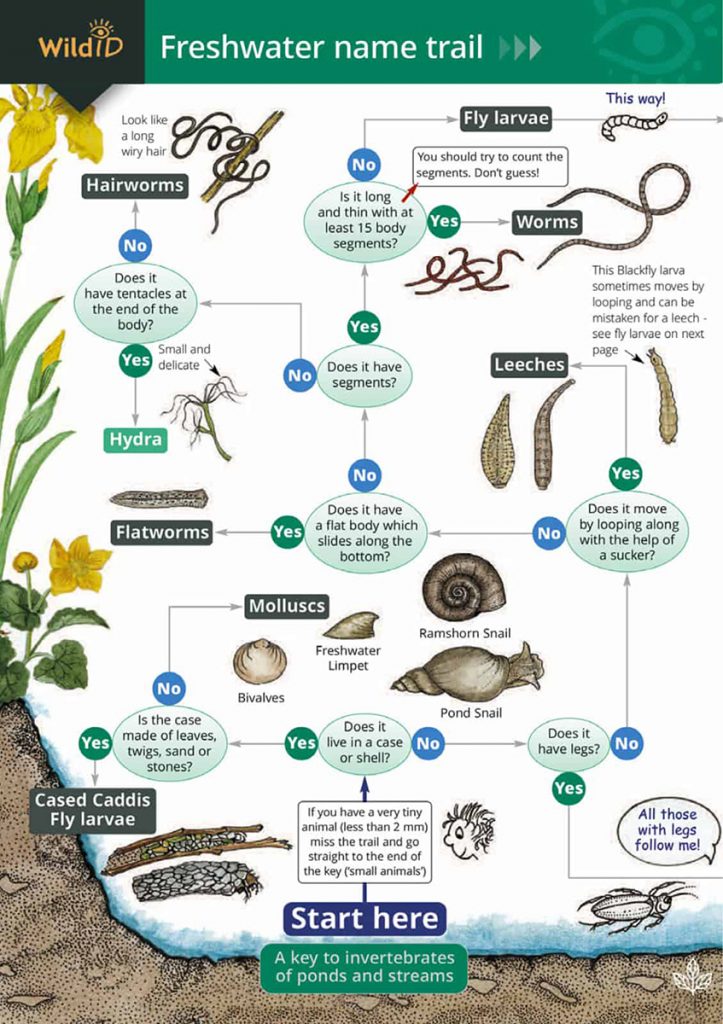 WildID Freshwater name trail (Click for larger version)
WildID Freshwater name trail (Click for larger version)
We had a lot of visitors during the day, mostly families with children, who were amazed at how many creatures could be found in the small river.
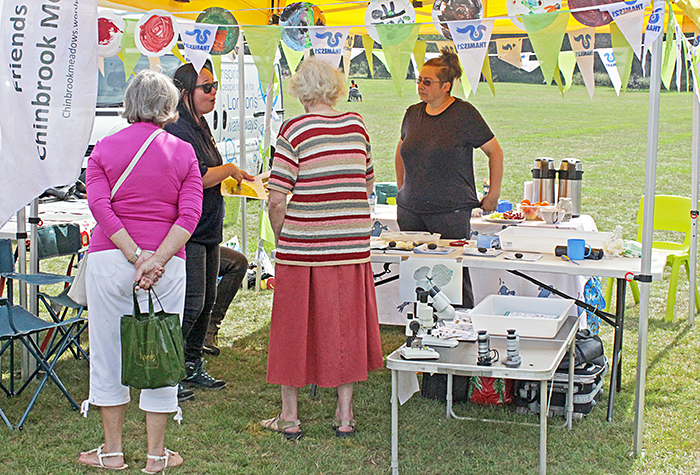 Carolina Pinto and Lisa Ashby with adult visitors
Carolina Pinto and Lisa Ashby with adult visitors
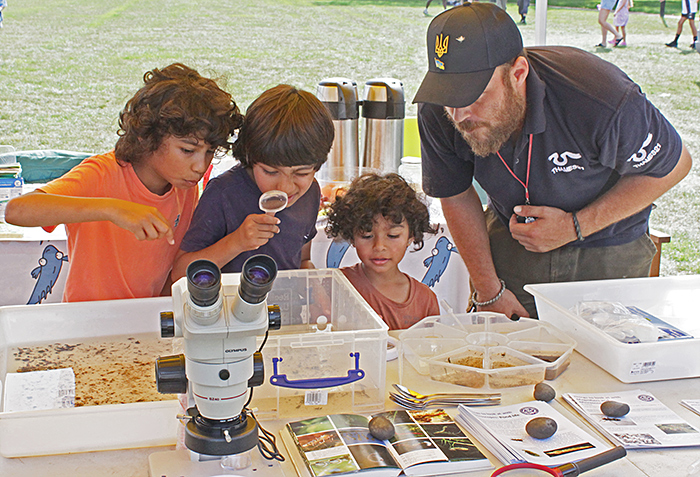 Michael O’Neill with young visitors
Michael O’Neill with young visitors
Thames21
Thames21 is an environmental charity that works with local communities to improve the River Thames and its tributaries (which include the River Quaggy) for people and wildlife. They have been planning a series of wetland basins in the Meadows to help improve the water quality in the River Quaggy and provide new habitats that will increase biodiversity. They have finally obtained all of the necessary permissions, and contractors were due to start the major earthworks on 4th September. Carolina Pinto and Michael O’Neill explained to several adult visitors the problems with the Quaggy, how the new wetlands will clean the water, and the new habitats that will be created over the next year or so.
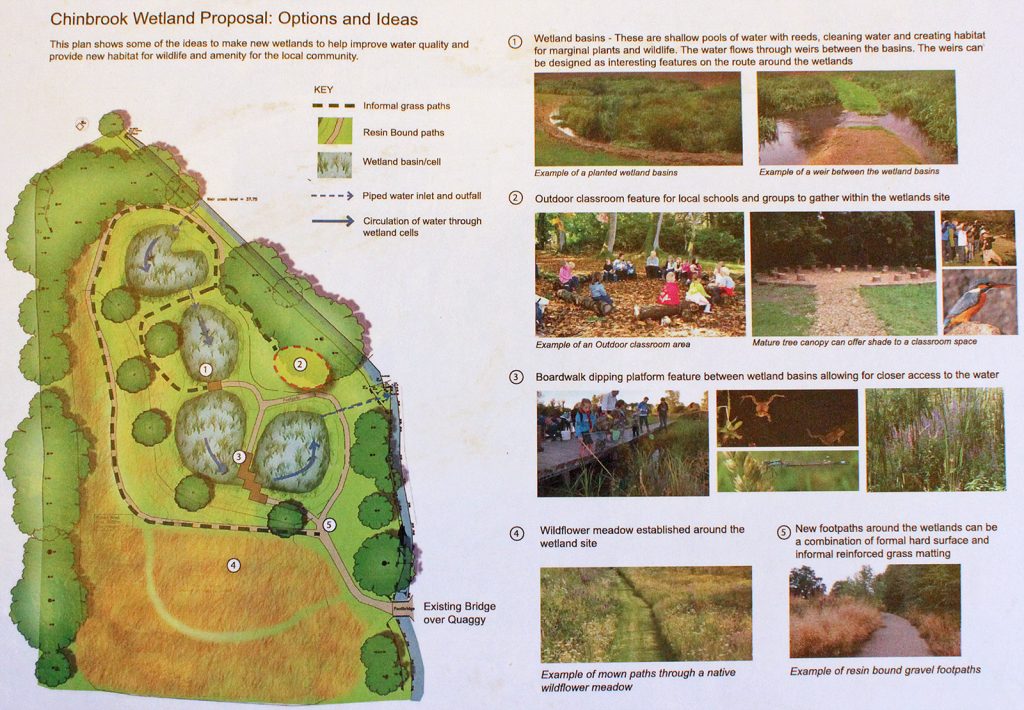 Wetland proposals (Click for larger version)
Wetland proposals (Click for larger version)
Thames21 has also produced an identification guide for 14 groups of freshwater invertebrates that shows which can tolerate pollution and which are sensitive to pollution.
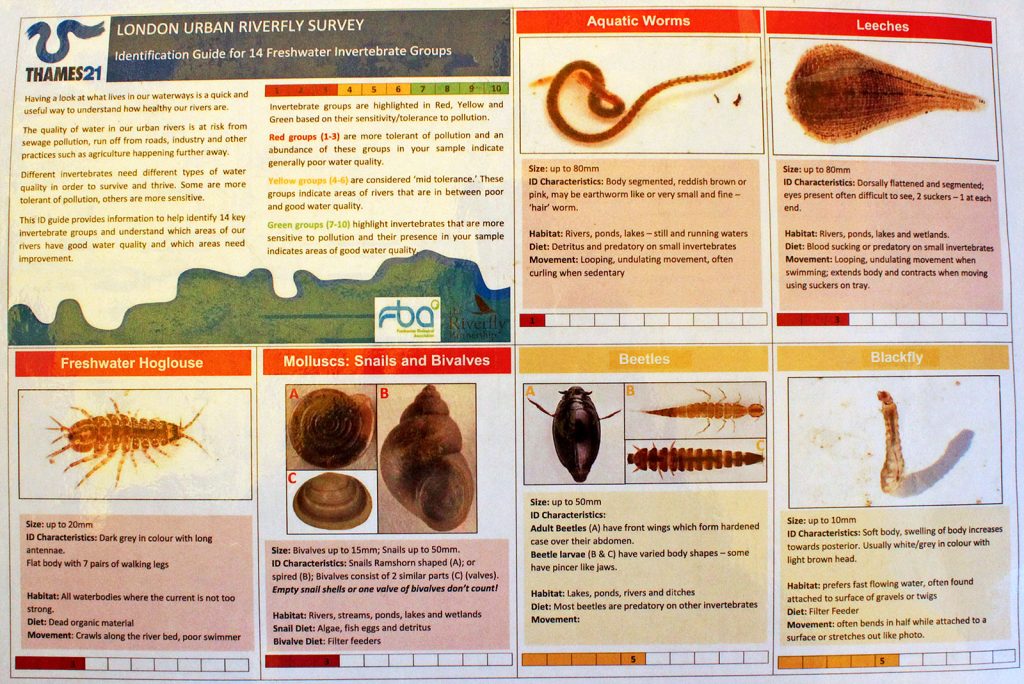 Identification guide (Click for larger version)
Identification guide (Click for larger version)
Carnival
The Carnival was organised by the Grove Park Carnival Group (also on Facebook), who had displays explaining the activities of the Friends of Chinbrook Meadows, a raffle, a “guess the weight of the marrow” competition, and colouring pens for children.
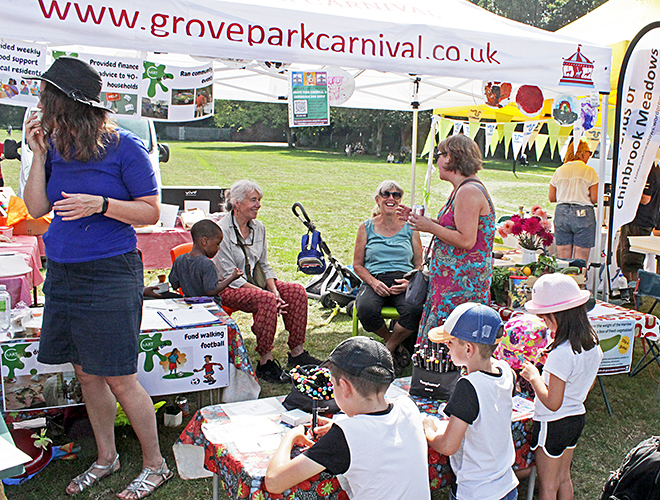 Grove Park Carnival Group gazebo (Anne Slater and Maggie Leharne seated)
Grove Park Carnival Group gazebo (Anne Slater and Maggie Leharne seated)
The event started with a parade, led by a marching band.
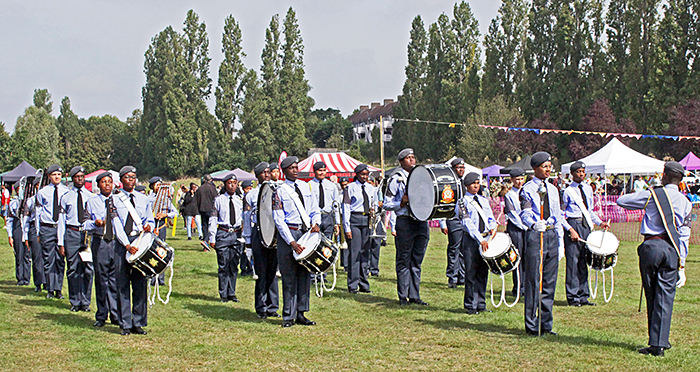 Marching band
Marching band
There were lots of stands, selling food and drink, toys, pet supplies, plants, arts and crafts, etcetera. If the excitement was too much for you, you could have your blood pressure checked by the NHS. Several organisations had stands, including the London Wildlife Trust, St Augustine’s Church, the Sidcup Lapidary & Mineral Society, 106 (Yeomanry) Regiment Royal Artillery and the Grove Park Youth Club.
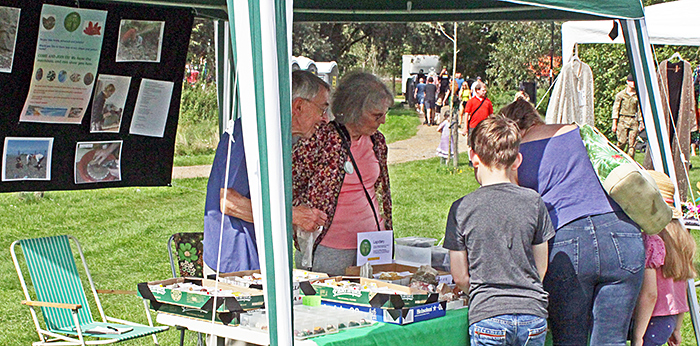 Sidcup Lapidary & Mineral Society
Sidcup Lapidary & Mineral Society
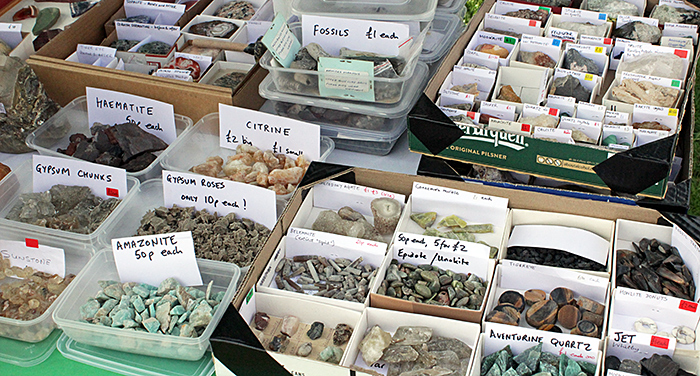 Minerals and fossils for sale
Minerals and fossils for sale
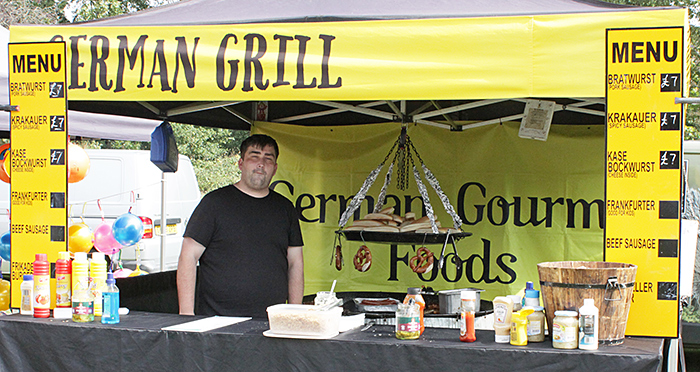 German Grill
German Grill
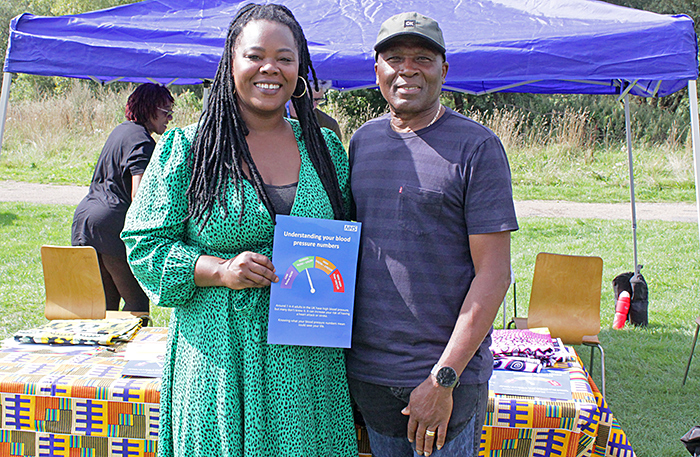 NHS blood pressure checks
NHS blood pressure checks
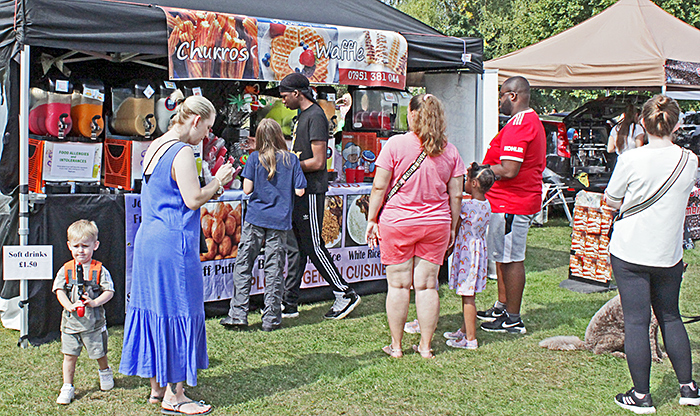 Churros Waffle
Churros Waffle
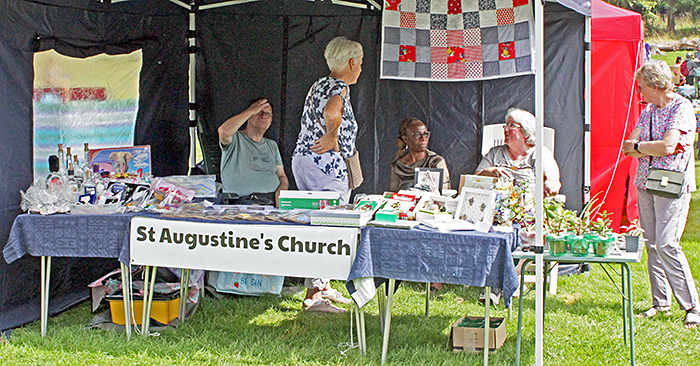 St Augustine’s Church
St Augustine’s Church
 The Diner
The Diner
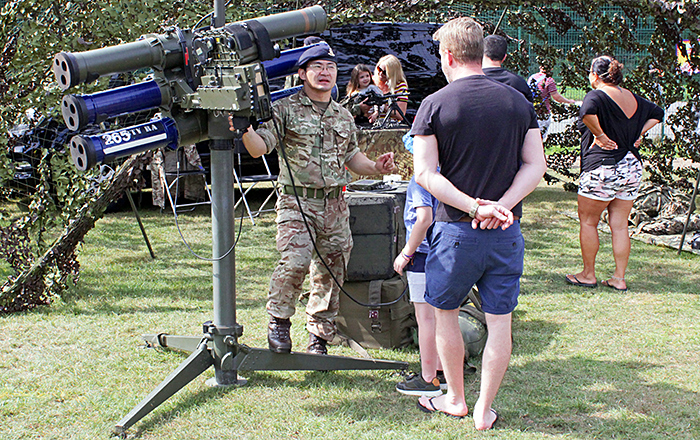 106 (Yeomanry) Regiment Royal Artillery
106 (Yeomanry) Regiment Royal Artillery
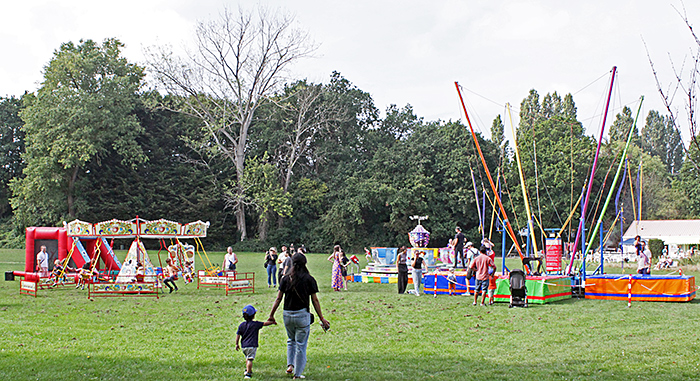 Funfair
Funfair
We are planning to be back at Chinbrook Meadows for Apple Day on Saturday 21st October 2023.
Report and most photographs by Alan Wood


